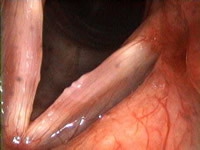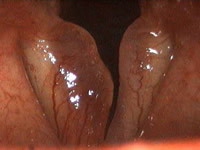Hoarseness of voice
Introduction:
Human voice is so complex that it not only conveys meaning, it also is capable of conveying subtle emotions. It is the most important physiological aspect that effectively starts to function immediately after birth.
Definition:
Hoarseness of voice is defined as any change in the quality of human voice (lay terms). This term utmost be considered to be a nonspecific one. This term could imply breathiness, roughness, voice breaks or unnatural pitch changes. Dysphonia is the corresponding term used by otolaryngologists to describe this condition.
“Hoarseness is a symptom of utmost significance and calls for a separate consideration as a subject because of the frequency of its occurrence as a distant signal of malignancy and other conditions”
Chevalier Jackson
Causes of hoarseness of voice:
1. Inflammatory causes including acute injuries
2. Mucosal disorders of vocal folds
3. Benign tumors of vocal folds
4. Malignant tumors of vocal folds
5. Laryngeal foreign bodies
6. Neurogenic causes affecting larynx
A useful Mnemonic to remember the causes of hoarseness of voice:
VINDICATE
V - Vascular (thoracic aneurysm)
I - Inflammation
N - Neoplasm
D - Degenerative (Amyotrophic lateral sclerosis)
I - Intoxication (smoking / alcohol)
C - Congenital
A - Allergies (angioneurotic oedema)
T - Trauma / Thyroid surgery
E - Endocrinology (Reidel's struma)
Inflammatory causes:
This is one of the commonest causes of hoarseness of voice. Inflammatory causes could either be acute / chronic.
Acute inflammatory causes: include acute laryngitis, acute epiglottis, acute laryngotracheal bronchitis, diphtheria etc.
Chronic inflammatory causes include: chronic non specific laryngitis (due to gastro oesophageal reflux disorders, vocal abuse etc). Chronic specific laryngitis (tuberculous / syphilitic laryngitis).
Acute vocal cord injuries can lead to vocal fold tears / hematoma causing hoarseness of voice. This condition resolves with complete voice rest.
Mucosal fold disorders:
1. Laryngeal oedema, Reinke's oedema.
2. Vocal nodule
3. Vocal cord polyp
4. Vocal cord cysts
Benign tumors:
1. Papilloma
2. Fibroma
3. Adenoma
4. Chondroma
Precancerous lesions:
1. Hyperkeratosis
2. Pachydermia
3. Leukoplakia
Malignant tumors of larynx:
1. Carcinoma vocal cords
2. Congenital conditions:
3. Congenital vocal cord webs
4. Foreign bodies
5. Vocal cord paralysis
Possible clinical presentations in patients with hoarseness of voice:
1. Change in voice
2. Cough
3. Fever
4. Vocal fatigue
5. Irritation / soreness of throat
6. Weight loss
7. Painful vocalization
8. Difficulty in swallowing
9. Breathy voice
10. Neck swelling
11. Painful swallowing
12. Heart burn / vomiting
13. Haemoptysis
13. Noisy respiration
Diagnosis:
Evaluation of hoarseness of voice should include:
Assessment of
Anatomy
Physiology
Behavioral factors
A complete history should be elicited.
Laryngeal visualization : Indirect laryngoscopy / Direct laryngoscopy
Objective voice assessment: simplest method would be a tape recording of the voice in question. This method should be considered to be subjective.
Acoustic analysis: In this test voice is examined as electrical signals. The term fundamental frequency is used to measure the number of vocal fold vibrations per second. A normal adult male vocal cord vibrates between 100 - 130 Hz, where as in females it vibrates at the rate of 200 - 230 Hz. Abnormally high fundamental frequencies corrected for age and sex changes would indicate hyper contraction of cricothyroid muscle representing a functional pathology or compensatory dysphonia.
Aerodynamic analysis:
The quality of voice is dependent on breath support. Even subtle respiratory problems can lead to changes in voice. Aerodynamic measurements play a role in quantifying airflow during respiration and phonation. Pulmonary function tests may play a role in identifying subtle respiratory problems.
Maximum phonation time:
This is a measurement of the amount of time a patient can sustain a vowel sound in one breath. Normal values range between 15 - 25 seconds. Decreased values indicate incomplete glottic closure or insufficient lung support.
Glottal air flow:
This sensitive test captures the amount of air flowing through the glottis during phonation. This is measured in cc/second by dividing the total volume of air flowing through the glottis by the amount of time in seconds. This gives information about the lung capacity and the efficiency of vocal folds. Increased glottal flow is associated with incomplete closure of glottis. The voice in patients with increased glottal flow is usually breathy / whispering in nature. Decreased glottal air flow is seen in patients with spasmodic dysphonia due to hyperadduction of vocal folds.
Management:
Absolute voice rest - very useful in acute conditions
Speech therapy - useful in chronic disorders
Antibiotics
Anti inflammatory drugs
Treatment of GERDS
Surgical intervention


